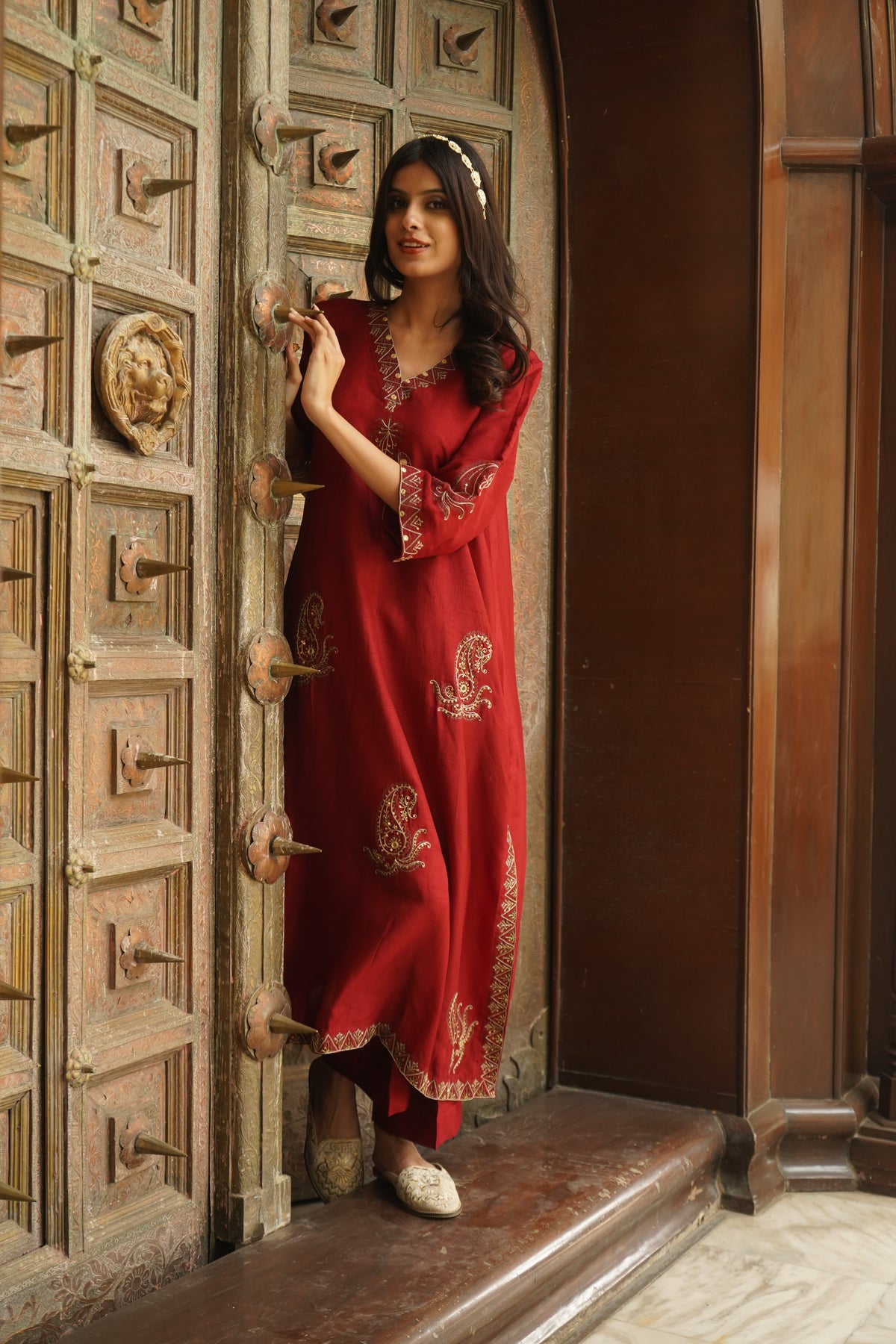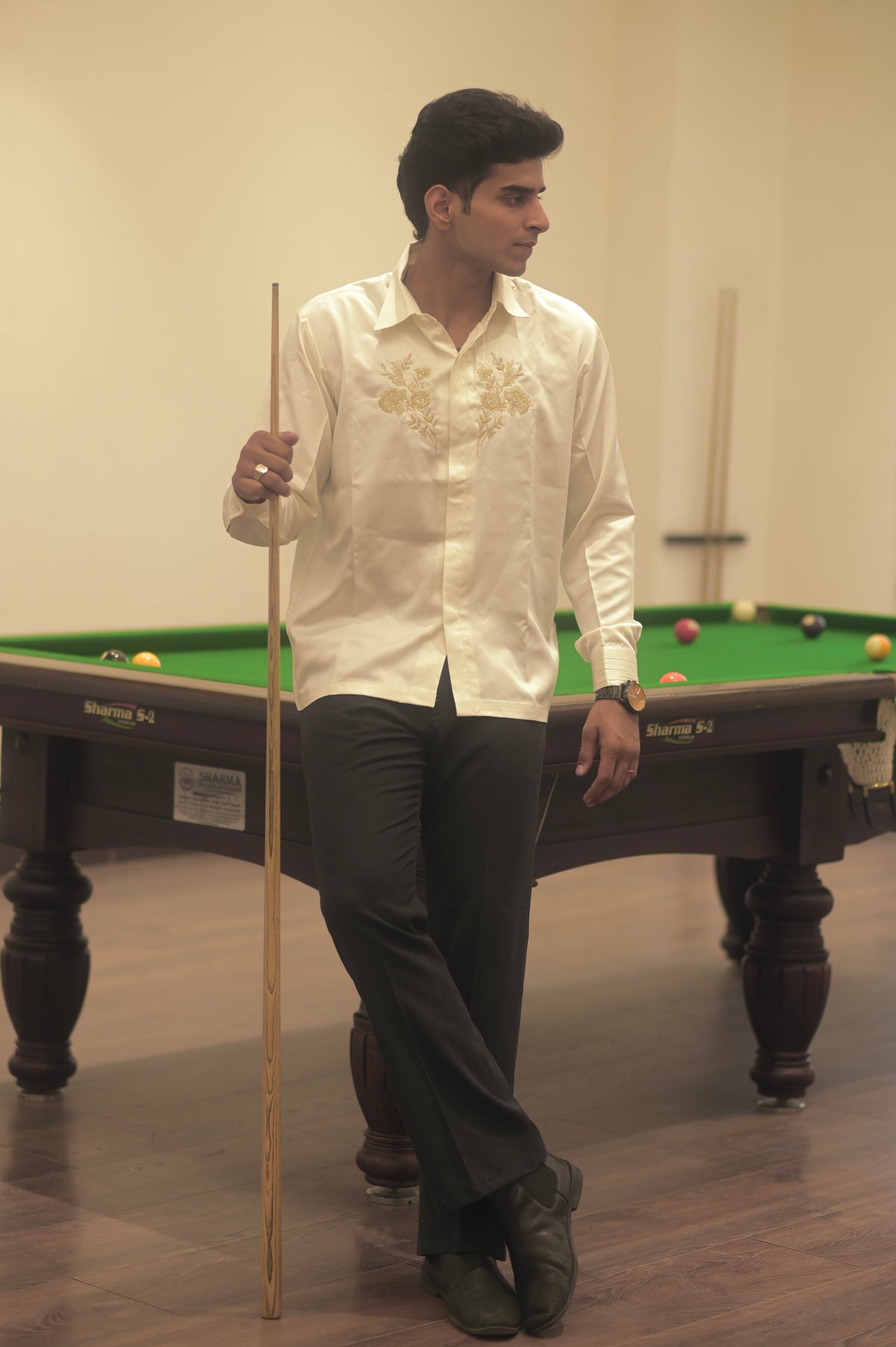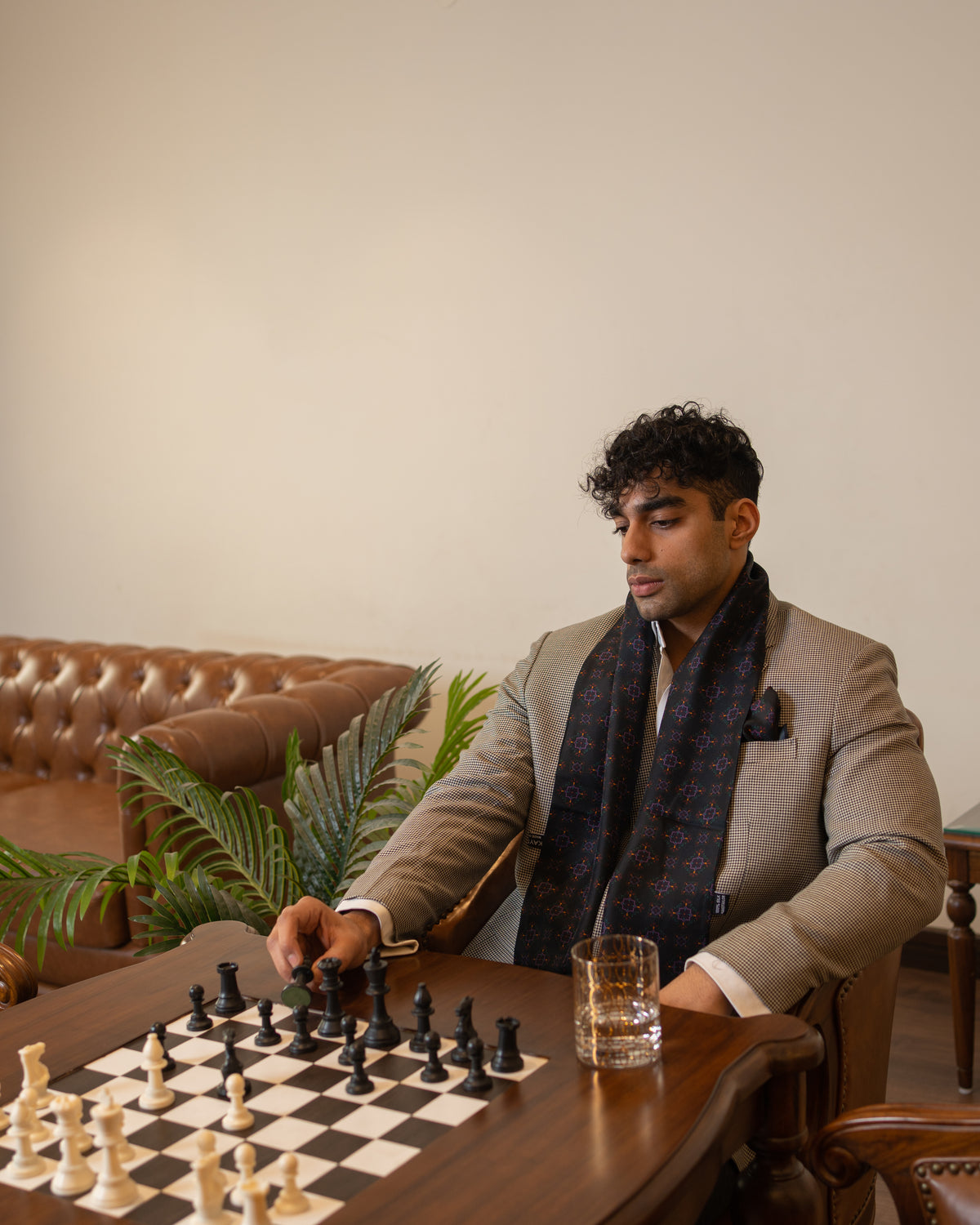There is an art to wearing a pocket square right so that it complements and improves the rest of your appearance while yet standing out enough to draw attention.
Among the most adaptable accessories for menswear is the pocket square. It may easily change the formality of an outfit, provide distinctive color and texture, and add the finishing touch, completing an ensemble.
Check out various textiles and materials.
Cottons, silks, and linens are ideal for the warmer months because of their light weight. A thicker square made of wool or cashmere can be preferable to your everyday one throughout the winter. To give your formal outfit a bit more adaptability, occasionally switch up your go-to fabric.
- Squares made of silk and satin have an opulent appearance and feel that make them appropriate for almost any setting and occasion.
Simple white pocket squares are a decent starting point.
White is a fantastic hue to use as a starting point since it complements almost anything. Moreover, it's less flamboyant, which might be advantageous if you're trying to transition into the style. Before adding wilder hues and patterns, you may start with neutral colors like white and go to subtle colors like light gray, powder blue, and khaki.
- Go for a pocket square with colored contrast stitching if you want to give a basic white one some panache.

Then switch to solid colors.
Choose a pocket square in a bright color that contrasts with your shirt, tie, or jacket. You'll be able to express yourself more clearly and gently that way. Bright squares provide a striking yet consistent appearance that won't detract from the rest of your clothing.
- Pair light-colored summer suits with a pastel pocket square, pink, or lavender to contrast a blue outfit, or choose a square in a bright red or yellow to complement a brightly colored ensemble.
- Although it shouldn't be an exact match, your pocket square should go well with the color of your shirt and tie.
By using different patterns, create contrast.
You may choose to wear patterns like stripes, polka dots, or even colorful floral prints if you want to go for a more lavish look. Experienced pocket-square wearers like patterns because they can quickly make an outfit seem sophisticated but amusing. They must complement the suit's color and design, as well as any other accessories.
- You might simply need a vintage pocket square to dress up suits in moderate colors like gray and brown.
- It's essential to limit the use of larger patterns because too much can quickly start to appear tacky.

Wear patterns that complement one another.
If you're wearing multiple patterns, be sure they're distinct enough to avoid being distracting. In this manner, the little, delicate pattern on your pocket square won't have to compete with the vast, homogeneous pattern on your tie. For each of your key accessories, it is best to choose a unique design, or at the absolute least, a distinct size or color scheme.
- In contrast to a pinstriped suit, a solid suit with a subtly textured tie will look great with a gingham pocket square.

Pick acceptable fold for the situation.
Generally speaking, you should choose a fold that you enjoy and believe looks decent. Yet occasionally, one design will be preferred over another. The three-point or crown folds are two folds that work best in formal contexts. On the other hand, the square fold, basic double peak, and other straightforward folds are more adaptable and may be worn to just about any function.
FLAT POCKET SQUARE
The flat pocket square is a simple, elegant fold that complements a tuxedo or other black tie attire. The best materials for this pocket square fold are cotton or linen. Keep in mind that you want your pocket square to be the ideal finishing touch, not to draw attention away from the rest of your suit.
- Place your pocket square flat, with a horizontal edge at the top and bottom, on a firm, level surface.
- Fold the square in half, mirroring the corners on the left and right sides.
- Fold the bottom edge forward until it nearly touches the top edge.
- Tuck into your pocket, making any necessary adjustments to ensure that the top of your pocket is horizontally bordered by a straight, flat edge.

ONE-POINT POCKET SQUARE
One of the quickest and simplest ways to wear a pocket square is the one-point fold. It's straightforward yet elegant enough to be worn to most formal occasions or in a corporate atmosphere.
- Placing the points of your pocket square top, bottom, right, and left on a flat, firm surface.
- Fold the pocket square in half by bringing the bottom point of the diamond up to the top point. A triangle will now be visible.
- Fold the right corner over that fold to meet the pocket square's new left edge, then fold the left corner approximately two-thirds of the way over to the right.
- Place the one point in the center of your pocket and tuck it inside. If necessary.

TWO-POINT POCKET SQUARE
For work or informal attire, it's stylish to complement a sports jacket or suit jacket ensemble. While wool pocket squares with the two-point fold could work as well, linen and cotton retain their form the best.
- The points of your pocket square should be pointing up, down, right, and left as you lay it flat on a hard, level surface.
- Fold the bottom corner up, leaving the top corner slightly to the left instead of exactly aligning them.
- Fold the left corner of the pocket square to the right about two-thirds of the way, then pull the right corner over that fold to meet the new left edge.
- Insert the pocket square so that the two points are in the middle of your pocket, and make any necessary adjustments.

THREE-POINT POCKET SQUARE
The three-point pocket square fold will come naturally once you've mastered the one- and two-point versions. Bright colors or patterns look wonderful and complement both formal and informal clothes.
- Position the points of your pocket square so that they are pointing up, down, right, and left on a smooth, level surface.
- Fold the bottom corner up, leaving it slightly to the left of the top corner rather than exactly aligning them.
- Fold the bottom-left corner to the right, bringing the tip just to the right of the center "peak" as you go.
- Straight across to the left, fold the remaining right side of the pocket square.
- Insert the pocket square, centering the three points in your pocket, and make any necessary adjustments.

FOUR-POINT POCKET SQUARE
The four-point pocket square is much more complicated and is referred to as the "Cagney Square" by some. While it is appropriate for business or more formal evening wear and pairs nicely with cotton or linen or silk, it could be too flamboyant for a black tie occasion.
- Place your pocket square on a hard, level surface, with the points pointing up and down, right and left.
- Fold the bottom corner up, leaving it slightly to the left of the top corner rather than exactly aligning them.
- Fold the bottom left corner to the right and put the point slightly to the right of the second "peak" by bringing up the bottom left corner.
- To create the fourth point to the left of the first three, fold the remaining right side of the pocket square up and to the left, bringing the corner up.
- Insert the pocket square, centering the four points in your pocket, and make any necessary adjustments.

WINGED-PUFF POCKET SQUARE
The fancier-looking, more sophisticated winged-puff pocket square fold nevertheless complements business or casual clothes the best. With its adaptable fold, you may choose between cotton or linen, solid colors or patterned fabrics.
- Place your pocket square on a hard, level surface, with the points pointing up and down, right and left.
- Fold the top corner down until it precisely reaches the bottom corner.
- Move the top left corner to the same bottom middle position, then the right.
- To make the left, right, and bottom sides of the pocket square, fold all of the corners toward the center.
- Insert the bottom folded edge into your pocket and adjust as required to center the top point of the pocket square.



